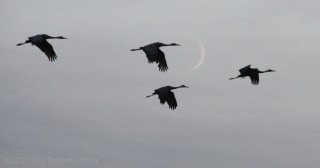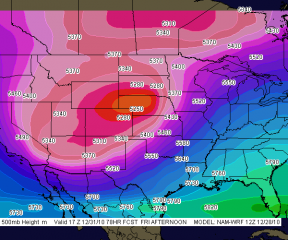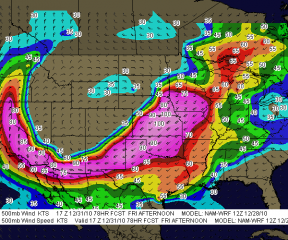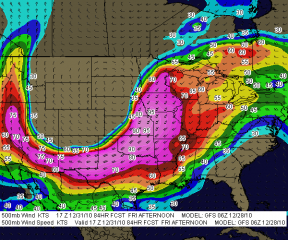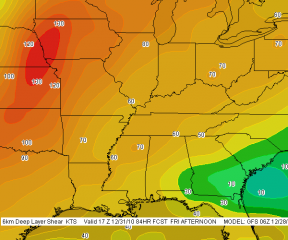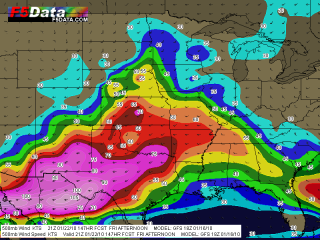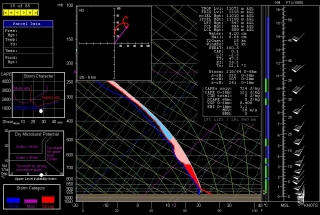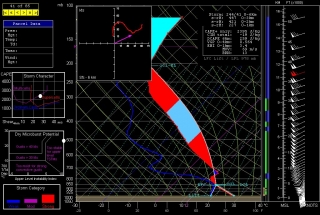Thursday Night
If the GFS is in the ballpark, then Monday by the Michigan border could be a chase day. Things may look better elsewhere in the country, but I have to stay local this coming week and take what I can get. I’m not going to slap up a bunch of weather maps right now because it’s too early to be definitive and too late at night for me to want to get very involved. The NAM will kick in tomorrow, and then things will become more interesting as I compare notes with it, the GFS, and the Euro.
Right now, though, the GFS is calling for a warm front laying down by the Indiana/Michigan border, with a surface low just to the west inducing strongly backed winds in the vicinity of the boundary. A stiff H5 jet core blows directly overhead, with shear to spare. SBCAPE of 1,000 J/kg-plus will be right in the neighborhood. The wild card looks to be whether sufficient moisture and instability will make it close enough to the boundary for helicity to do its thing.
The SPC’s current long-range outlook for Monday puts all of the action well to the south, from central Illinois and Indiana down to Dixie Alley. But I’m thinking that there’s a chance for tornadoes much closer to home. Not that I’m betting on it, but I am most definitely going to be keeping a close eye on the forecast models to see how they trend over the weekend.
Update: Ugh!
As of this Friday morning, the last two runs of the GFS and now the NAM are painting a very different scenario around here from what I’ve described above. Monday’s outlook for this neck of the woods look good for storms, but with the winds unidirectional from the southwest the setup appears to be quite linear. The warm front looks to lift up into Michigan and there’s bound to be some backing of winds along that boundary, but whether they can hook up with surface-based instability is the question, and the cold front will be breathing down their neck, rocketing in and shoveling up the moisture en masse.
I should mention that this is the more hopeful picture per the NAM, which places the triple point in southwest Michigan by 18z. The faster GFS has blasted the cold front through by that time, with the low center well to the north, and the Euro is uncharacteristically even more aggressive. I had read that it and the GFS were in good agreement previously, but I don’t see that reflected here.
That’s as of the 6z GFS and NAM runs. The picture has changed, but chances are it’ll change again. The only thing to do is sit back, watch this pot bubble, and see what comes of it.










